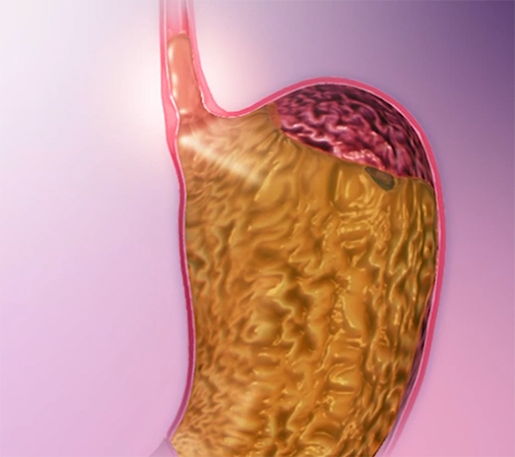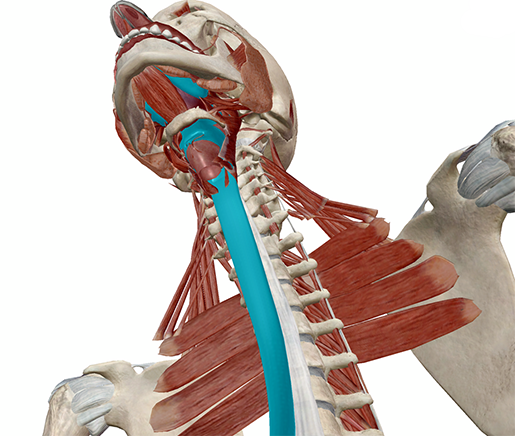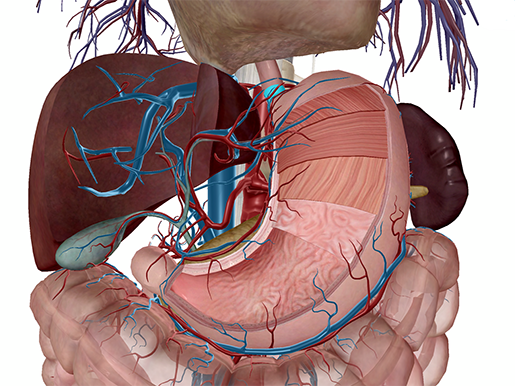Posted on 8/30/17 by Madison Oppenheim
 Image captured from Physiology Animations.
Image captured from Physiology Animations.
I am an ardent lover of Italian food, especially everyone's favorite meal: pizza. I wouldn't say I'm a picky eater when it comes to pizza, but just like everyone else, I have my favorite haunts. Bertucci's has been a fan favorite in my family for years; in fact, we go there so frequently that we know most of the waitresses by name. Our favorite pizza is ham and green peppers, which if you have never tried, is amazing.
Now, if you’re anything like my dad, you take an antacid after every meal for heartburn relief. But have you ever wondered why you get heartburn?
We first have to get into digestive anatomy so we can understand why this unpleasant feeling occurs.
 Upper alimentary canal (highlighted). Image captured from Human Anatomy Atlas.
Upper alimentary canal (highlighted). Image captured from Human Anatomy Atlas.
When you eat, food travels down your esophagus and into your stomach. You have what’s called the cardiac (or esophageal) sphincter at the top of your stomach to prevent food from coming back up—at least that’s what it’s supposed to do. Sometimes, partially digested food can escape through the sphincter and travel back up the esophagus, bringing painful stomach acid with it. This painful sensation is what's known as heartburn.
Heartburn, also called acid reflux, is actually pretty common, but if it occurs at least twice a week or begins to affect daily life (like at a family dinner, Dad), you may have GERD.
 Esophageal sphincter (highlighted). Image captured from Human Anatomy Atlas.
Esophageal sphincter (highlighted). Image captured from Human Anatomy Atlas.
GERD is a fancy acronym for gastroesophageal reflux disease. Gastro refers to your stomach and esophageal refers to your esophagus. GERD results when the sphincter is weakened and not working properly. There are some risk factors, though, including obesity, diet, and pregnancy, which can put you at a higher chance of developing GERD. It's a chronic disease, which means it develops and worsens over an extended period of time. If left untreated, it can damage your esophagus and even lead to esophageal cancer.
Check out more Anatomy & Physiology videos on our YouTube Page.
Symptoms of heartburn or GERD (if the reflux is persistent and recurring) are:
With the deliciously cheesey taste of pizza comes the savory tomato. Acidic foods (like tomatoes) are considered "triggers" and can easily cause heartburn, especially when consumed on an empty stomach.
Some other triggers to look out for if you’re prone to heartburn include:
Minding what you eat and drink can help with GERD, but there are also easy treatments for the painful symptoms.
As I mentioned earlier, my dad swears by popular OTC brands of antacids; he brings them everywhere and even has travel size packages for vacations. Antacids neutralize stomach pH to provide temporary relief. There are also prescription proton-pump inhibitors that actually reduce stomach acid production.
If your GERD symptoms persist even with medication, you can talk to your doctor about surgical treatment. The most common procedure is called a fundoplication. The surgeon sews the fundus (upper part of the stomach) around the esophagus, which puts more pressure on the sphincter to control the reflux.
So go forth and enjoy your pizza—just remember to throw a bottle of antacids in your purse or car for flare-ups. But if your heartburn is a persistent, go see your doctor.
Be sure to subscribe to the Visible Body Blog for more anatomy awesomeness!
Are you a professor (or know someone who is)? We have awesome visuals and resources for your anatomy and physiology course! Learn more here.
Additional sources:
"GERD." MedlinePlus, 5 Jul. 2017. Web. 9 Aug. 2017.
"GERD." Mayo Clinic, 31 Jul. 2014. Web. 9 Aug. 2017.
When you select "Subscribe" you will start receiving our email newsletter. Use the links at the bottom of any email to manage the type of emails you receive or to unsubscribe. See our privacy policy for additional details.
©2026 Visible Body, a division of Cengage Learning